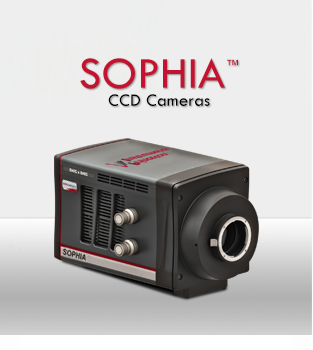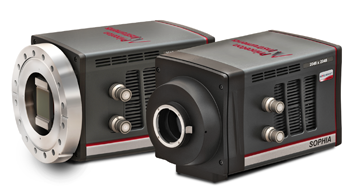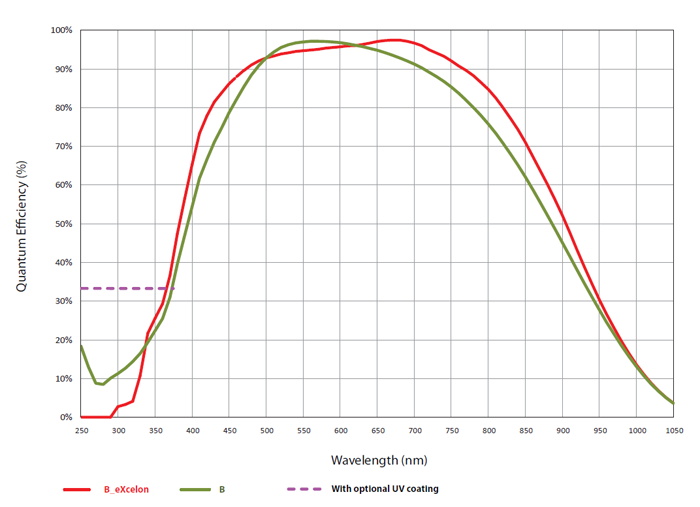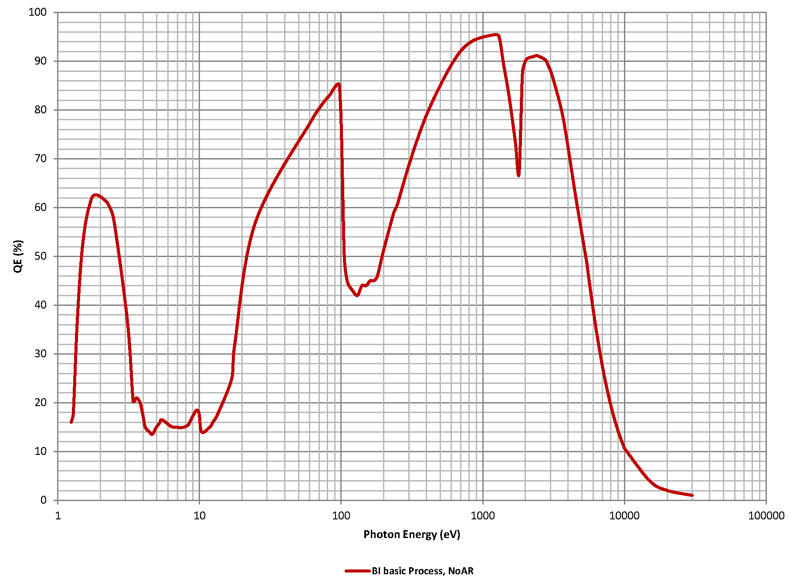SOPHIA Ultra-Low Noise CCD Cameras

Princeton Instruments is pleased to present SOPHIA, our most advanced line of ultra-low-noise scientific cameras yet. SOPHIA integrates precisely engineered ultra-low-noise electronics, state-of-the-art software, and proprietary new ArcTec thermoelectric cooling technology. ArcTec utilizes extensive computational fluid dynamics (CFD) analysis, an all-metal hermetic vacuum design, and custom-developed Peltier devices to achieve unprecedented cooling performance and reliability. The speed and sensitivity of the SOPHIA series make these cameras ideal for low-light-level research applications as diverse as photometry, chemiluminescence, astronomy, in vivo small animal imaging, and spectroscopy.
In order to facilitate soft x-ray detection, the SOPHIA-XO model uses no antireflective coatings and employs an open-nose design.
Key features of SOPHIA cameras include the following:
-
ArcTec™ technology cools sensor below -90°C without chillers or cryocoolers
-
Permanent vacuum guarantee
-
2048 x 2048 back-illuminated CCDs deliver >95% peak QE
-
Patented eXcelon technology -low fringing and enhanced
sensitivity over broad wavelength range
-
Up to 16 MHz readout rate with up to 4-port simultaneous readout
-
New, ultra-low-noise readout electronics with ultra-stable bias
-
High-speed USB 3.0 data interface with optional fiberoptic
connection for remote operation
-
Compatible with IsoPlane and SpectraPro spectrometers
-
Fully supported by 64-bit LightField software
As the most advanced ultra-low-noise camera platform developed to date by Princeton Instruments, the SOPHIA series provides an unprecedented combination of sensitivity, speed, and flexibility. Using the latest USB 3.0 data interface and multi-port readout capabilities up to 16 MHz, SOPHIA increases frame rates by as much as 4x while delivering the low noise typically attributed to slow-scan detectors.
Learn more about the SOPHIA-XO soft x-ray cameras.

“Over the past 35 years, Princeton Instruments has produced iconic cameras, spectrometers, and software — advanced scientific tools utilized by leading researchers and Nobel laureates around the world. SOPHIA extends this lineage of innovation. With ArcTec cooling technology, brand-new readout electronics, and a USB 3.0 interface all integrated via our acclaimed LightField software, we believe no other scientific-grade low-light detector can match SOPHIA’s performance and ease of use.”
- Ravi Guntupalli, VP Sales & Marketing, Princeton Instruments
SOPHIA’s 30.7 mm x 30.7 mm (2k x 2k) photosensitive array utilizes 15 µm x 15 µm pixels to detect 23% more photons than comparable back-illuminated sensors with 13.5 µm x 13.5 µm pixels. Not only do SOPHIA cameras detect more photons, they keep the noise of each pixel low. New ArcTec cooling technology minimizes dark noise by deeply cooling the CCD without the need for bulky chillers or cryocoolers; eXcelon sensor technology broadens sensitivity over a wider wavelength range and reduces unwanted fringes in the near-infrared region, further improving signal-to-noise ratio.
SOPHIA CCD and X-Ray Cameras model comparison and datasheets
|
Imaging Models |
Imaging Array |
Sensor Type |
Pixel Size |
Peak QE |
SOPHIA 2048B |
2048 x 2048 |
Back-illuminated |
15.0 x 15.0 µm |
view QE data below |
SOPHIA 2048BX |
2048 x 2048 |
Back-illuminated with eXcelon |
15.0 x 15.0 µm |
view QE data below |
SOPHIA-XO 2048 |
2048 x 2048 |
Back-illuminated |
15.0 x 15.0 µm |
view QE data below |

NOTE: Graph shows typical Quantum Efficiency (QE) data measured at - 25°C. QE decreases at normal operating temperatures. For the best results for your application, please discuss the specific parameters of your experiment with your sales representative.

Fluorescence, Phosphorescence, and Photoluminescence Spectroscopy
Fluorescence, phosphorescence and photoluminescence occur when a sample is excited by absorbing photons and then emits them with a decay time that is characteristic of the sample environment.
Astronomical Imaging
Astronomical imaging can be broadly divided into two categories: (1) steady-state imaging, in which long exposures are required to capture ultra-low-light-level objects, and (2) time-resolved photometry, in which integration times range from milliseconds to a few seconds.
Bose-Einstein Condensate
Bose-Einstein condensate (BEC) can be regarded as matter made from matter waves. It is formed when a gas composed of a certain kind of particles, referred to as “bosonic” particles, is cooled very close to absolute zero.

